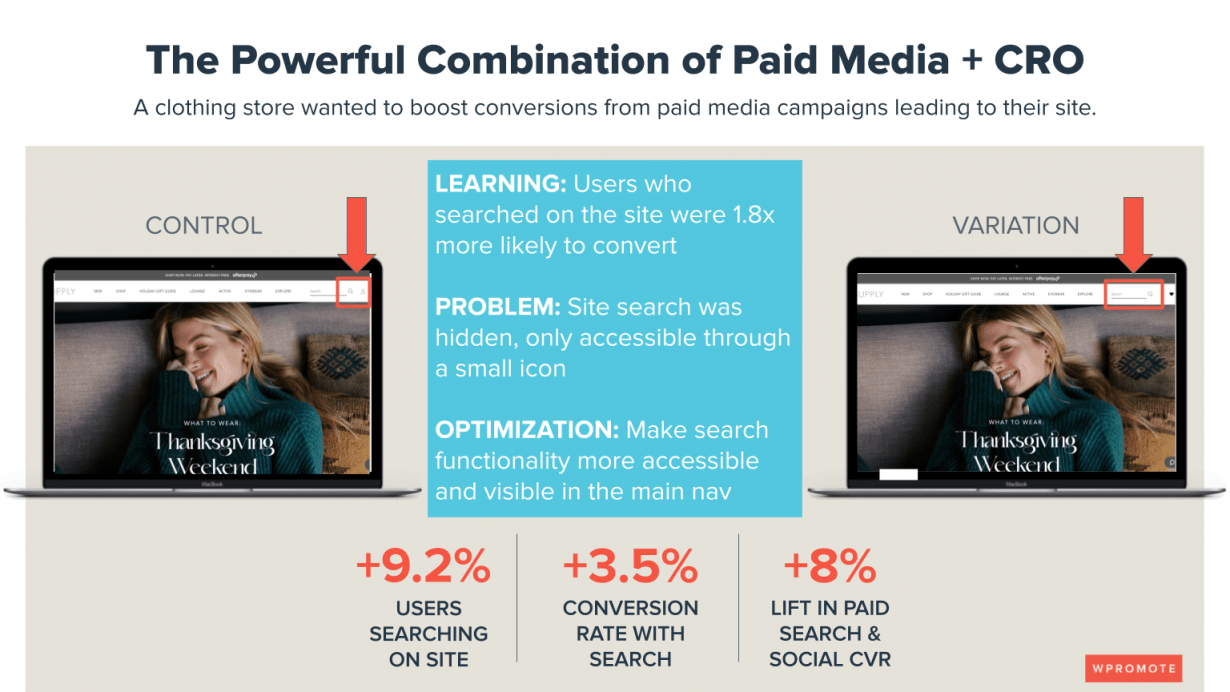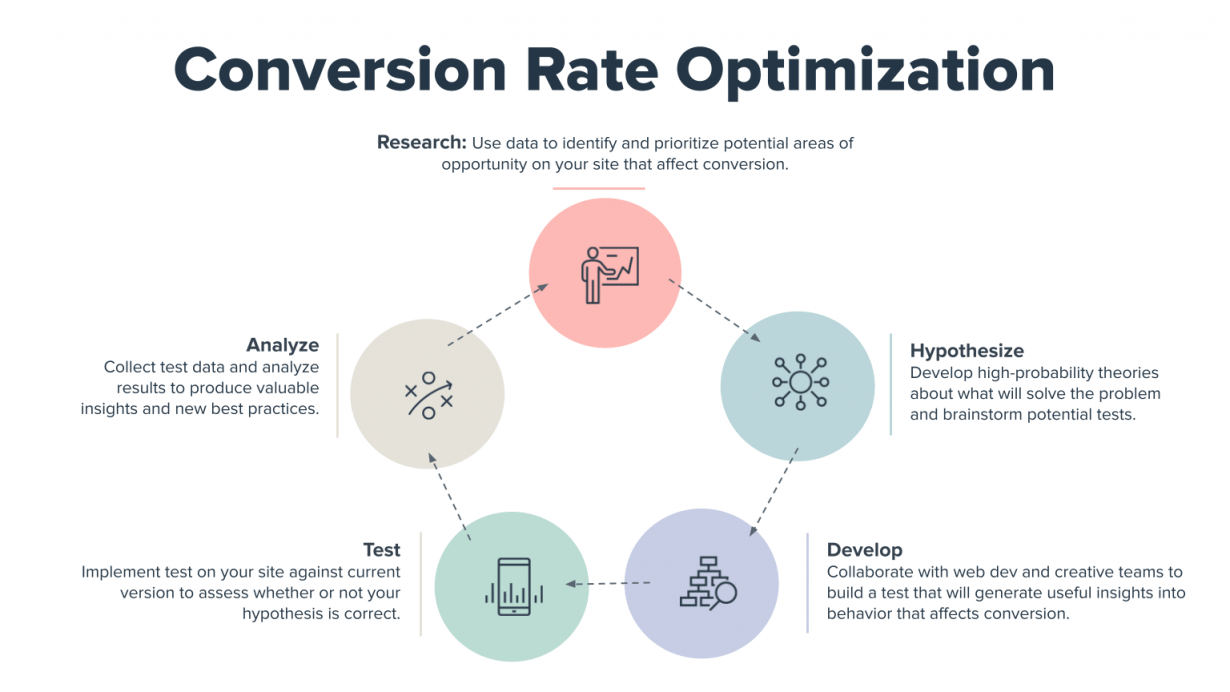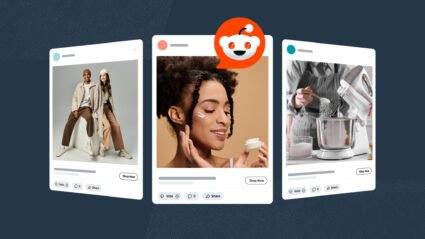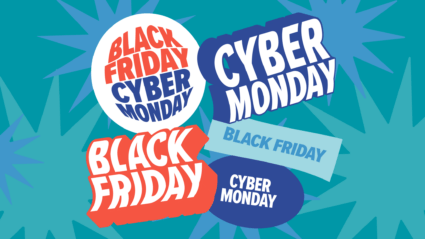If you’re running paid media campaigns that lead back to your website without investing in conversion rate optimization (CRO), you’re basically trying to keep a leaky bucket full by filling it with more water – you’ll probably get some business if your campaigns are strong, but you’ll definitely miss out on valuable sales and intelligence.
Paid and earned media conversion rates aren’t just the product of the campaigns themselves; they directly hinge on the effectiveness of the landing page they’re sending people to. Your site pages need to be built to convert and stay agile to stay in tune with consumer behavior shifts.
When paid media and CRO are paired together, they epitomize the 2+2=5 goal of marketing. Together, they’ll help you maximize the return on your ad spend while producing insights that will help you drive even more conversions and generate high-quality leads.
How CRO and paid media work together to make marketing more effective and efficient
In order to create a successful 1-2 punch to get the conversions, leads, and sales that you aspire to, your CRO and paid media teams have to work in tandem.
CRO needs data to identify what could be improved or needs to be fixed on a website, and that raw material can come straight from your paid search and social teams. Elements ripe for CRO-focused A/B testing include audience characteristics, keyword opportunities, and creative copy. Your paid media teams should be relaying information on their wins and losses to help the CRO team understand what levers they should be testing to make landing pages as effective as possible. If certain messaging isn’t earning the click on a social ad, for example, that’s valuable intel for the team testing site copy.

Because many (if not most) paid media campaigns point users to the site, CRO should be an essential component of your overall media strategy. Paid search and social teams don’t touch anything post-click; if they earn that click, the site still needs to convert the users, whether that’s by making a purchase or filling out a form.
CRO can help optimize website and landing pages post-click for that specific traffic source. CRO takes that high-quality traffic, works to better understand the audience, and turns browsers into buyers and passive shoppers into leads.
That purview isn’t limited to optimizing current landing pages; a sophisticated CRO strategy might include building out personalized landing pages that are tailored to the keyword or campaign creative used in the paid media source, delivering a more seamless experience to the prospective customer. Tools like Shogun help CRO strategists create targeted landing pages quickly and easily that allow for targeted personalization across channels.
Why CRO is good for your budget, especially if paid media spend is cut
One unfortunate tendency during times of economic uncertainty is to pull back on marketing spend, even if that goes against the best interests of the business. That usually means a lower volume of traffic is coming to your site through paid channels.
But smart paid campaigns aren’t just looking at volume, they’re tasked with sending the highest-quality traffic to the site. So what happens when they get there?
Once again, smart marketing leaders know that CRO will make sure that you’re getting everything you can out of that traffic based on whatever budget you have.
When volume goes down, your site can’t let anyone slip through the cracks because it’s not built to capture and convert that initial click.
CRO is beneficial for your marketing budget because it:
- Provides a clear view of your audience
- Creates effective landing pages
- Keeps traffic costs affordable even when advertising costs increase
- Saves you money in a redesign while maximizing potential returns
Standard best practices indicate you should allocate about 30% of your total marketing budget to CRO. But regardless of the actual number, make sure that you aren’t allocating budget toward CRO as a one-off expense, but as a recurring investment.
How to align paid media strategy with CRO marketing
If you are just starting to coordinate your CRO and paid media teams, or looking for areas to improve, there are a few places you can start.
Conduct an opportunity analysis on your site to figure out where your strengths and weaknesses are:
- Identify your worst-performing landing pages for opportunities to optimize
- Look at your best-performing landing pages for insights into what is working

On the paid media side, start sharing what’s working and what’s not in your paid campaign tests with the CRO team so they can use that intelligence to optimize landing pages.
If there are creative or copy wins, your CRO team can make sure that your landing pages leverage the same language and angle to make the purchase journey as smooth as possible and you aren’t losing any potential customers because of a post-click disconnect. That’s where the CRO team can start experimenting with creating unique experiences for the customer through landing page personalization.
Your CRO team also needs to know which landing pages you’re sending the most traffic to or are particularly valuable for another reason. That can take the guesswork out of knowing where to focus their efforts to make the biggest possible impact.
From there, the CRO team will dive into the on-page data using heatmaps, user testing, and general data reporting to find pain points that can drive optimizations. When you pair that information with what you know from paid media testing, you’ll get a better understanding of customer behavior, which is key to improving conversions.
Keep in mind that paid media moves relatively quickly, while CRO takes time and is a slightly longer-term process. Experiments run for 2-3 weeks at a time, which may not align very well with short-term seasonal campaigns, for example. The tandem play of CRO and paid media works best for more evergreen efforts.







Responses